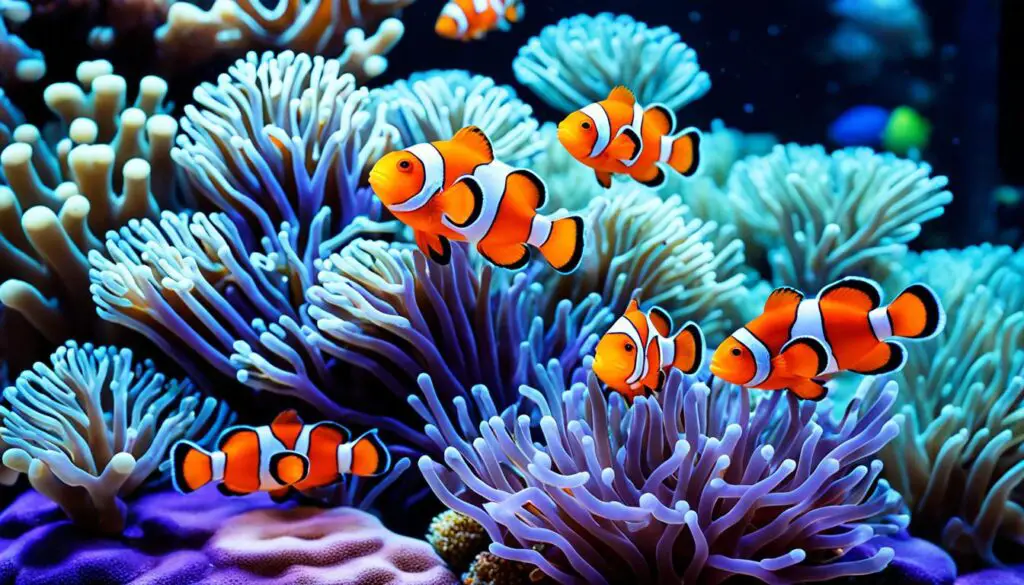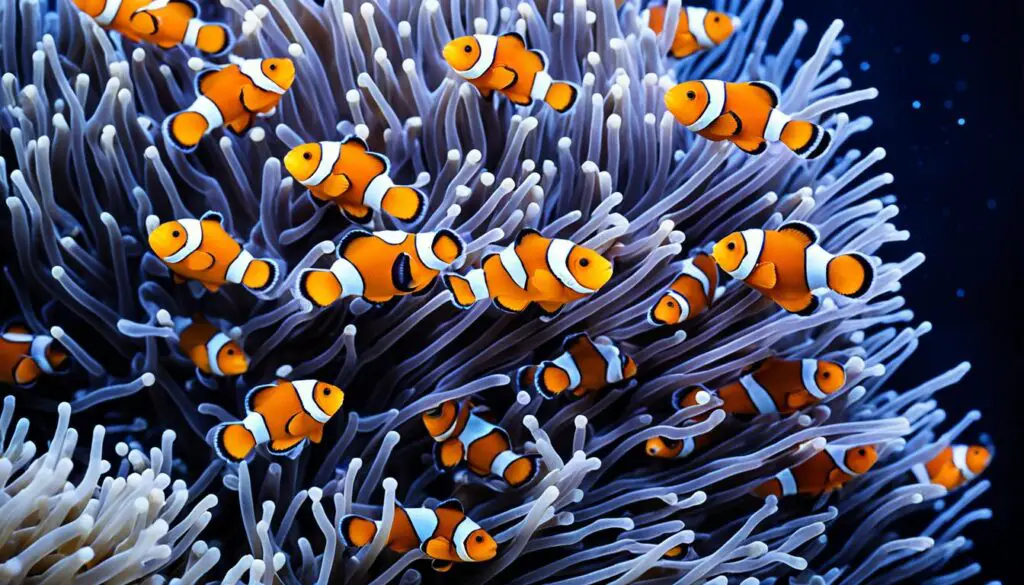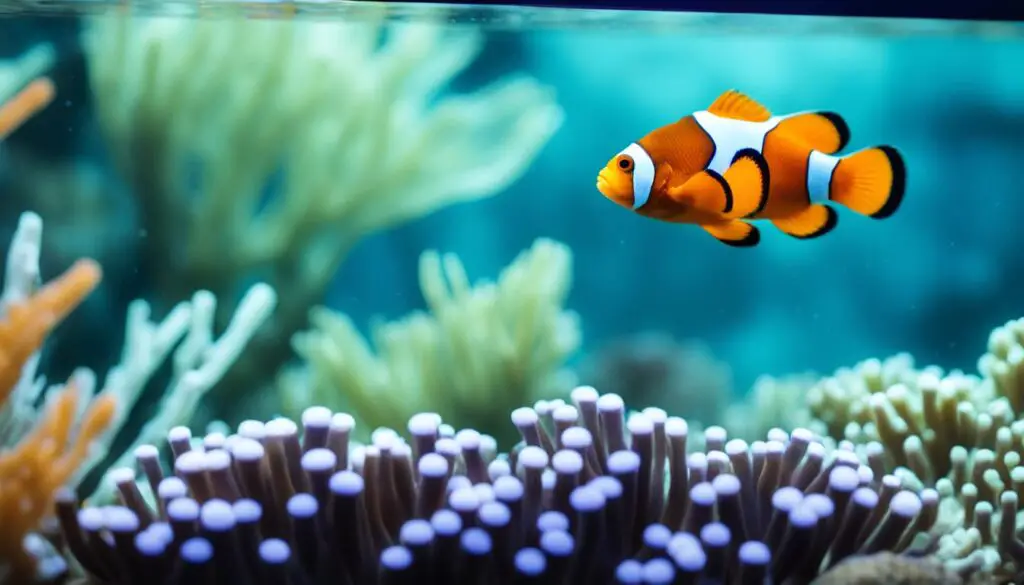Why Do Octopus Ink
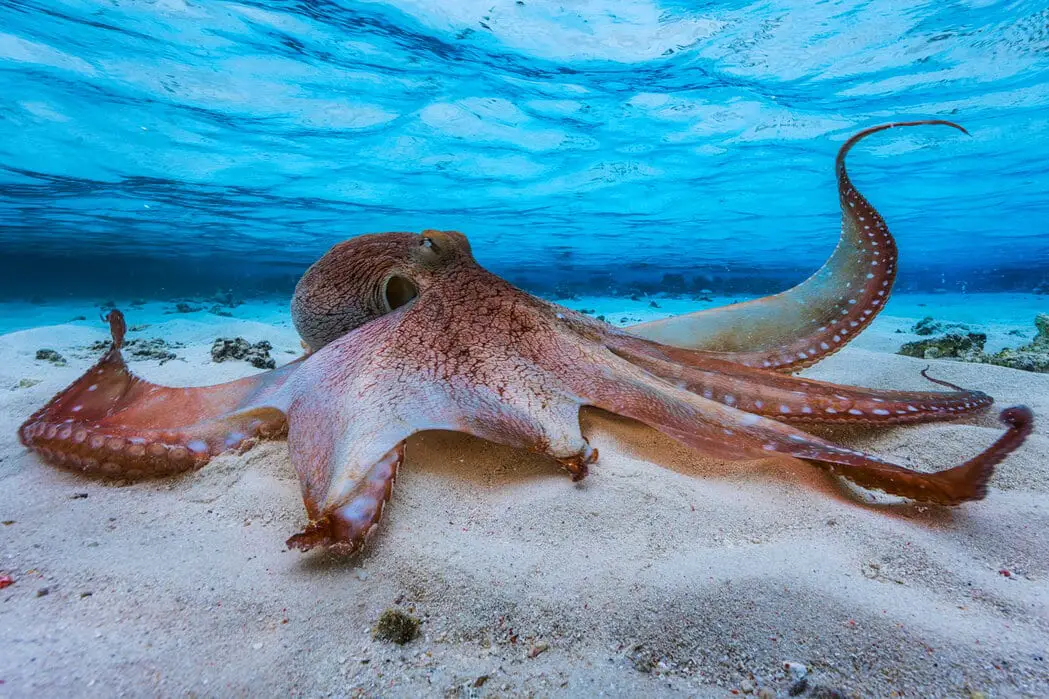
Introduction
Why Do Octopus Ink: Octopuses, with their mesmerizing appearance and extraordinary intelligence, have long captured the fascination of marine biologists and curious minds alike. Among their many remarkable adaptations, one of the most intriguing is their ability to release ink into the water, a behavior known as “ink secretion.” This unique defense mechanism serves multiple purposes, each highlighting the octopus’s incredible survival strategies and biological sophistication.
At first glance, it may seem that octopuses resort to ink as a last-ditch effort to evade predators, a mere smokescreen to cloud their pursuers’ vision. However, the ink’s role goes far beyond being a simple distraction. In this intricate dance between prey and predator, octopus ink serves as a multi-faceted tool, intricately woven into their evolutionary history.
In this exploration, we delve into the fascinating world of octopus ink, seeking to unravel its mysteries and understand the underlying reasons behind its production. Beyond camouflage and confusion, we will discover how this ink acts as a shield, a cloak, and a decoy, allowing octopuses to outwit their adversaries in a perpetual struggle for survival beneath the waves.

Why do octopus throw ink?
Octopus and Squid use their ink as a defense mechanism to escape from prey. When feeling threatened, they can release large amounts of ink into the water using their siphon. This ink creates a dark cloud that can obscure the predators view so the cephalopod can jet away quickly.
Octopuses, with their remarkable abilities and complex behaviors, have long piqued the curiosity of scientists and nature enthusiasts alike. One of their most iconic behaviors is the release of ink into the water, a phenomenon that has been the subject of much fascination and study.
Octopuses throw ink primarily as a defensive mechanism. When confronted by a potential threat, their immediate response is to deploy this ink as a smokescreen, creating a cloud of dark, murky water that confuses and disorients their pursuer. This ink cloud serves as a clever diversion, allowing the octopus to make a swift escape to safety.
However, the reasons behind this ink deployment go beyond mere distraction. Octopus ink contains bioactive compounds that can interfere with the senses of predators. It can impair their olfactory (smell) and gustatory (taste) abilities, making it difficult for them to track the escaping octopus accurately. This chemical aspect of the ink adds an extra layer of defense, reducing the chances of the predator successfully capturing its prey.
Octopuses throw ink as a brilliant combination of defensive strategies – both visual and chemical. It’s a testament to their remarkable adaptability and intelligence in the face of danger, allowing them to outwit their adversaries and continue to thrive in the complex underwater ecosystems they call home.
What does octopus ink do to humans?
Squid and octopus inks are often consumed by humans in recipes for these species and, of course, by their natural predators. There is apparently no harmful effect in doing this.”
Octopus ink, a fascinating product of these intelligent marine creatures, has intrigued humans for centuries. While octopus ink is not inherently harmful to humans, its effects on us are quite different from its intended purpose in the octopus’s defensive arsenal.
In culinary circles, octopus ink is a sought-after ingredient known for its unique flavor and dark color. It’s used to add a distinctive and rich taste to various dishes, most notably in Mediterranean cuisine. One of its famous culinary applications is in dishes like squid ink pasta or risotto, where it imparts a savory, briny essence to the food.
Beyond culinary use, octopus ink has been employed historically for various purposes. Some cultures have used it as a pigment for art and writing, creating dark and long-lasting inks. However, modern ink manufacturing has largely replaced such traditional practices.
In terms of safety, octopus ink is generally considered non-toxic when consumed in small quantities as part of a well-prepared dish. However, as with any food, it’s essential to ensure that it is handled and prepared properly to prevent foodborne illnesses.
Octopus ink does not pose any direct harm to humans. Instead, it offers a unique culinary experience, adding a distinctive flavor and color to certain dishes. Its cultural and historical significance also makes it an intriguing aspect of the rich tapestry of human interactions with the natural world.
Does it hurt an octopus to ink?
If you have an octopus in a small enclosure, and the octopus squirts ink into the water, this can eventually kill the octopus by fouling the water and making it impossible for the octopus to breathe. The ink also can fuel a bacterial bloom that will poison the octopus.
Inking is a complex and fascinating defensive mechanism used by octopuses, and while it does serve a crucial purpose in their survival strategy, it doesn’t inherently cause physical harm to the octopus itself. Instead, the process of inking is a controlled and natural response to perceived threats.
When an octopus feels threatened or cornered by a potential predator, it expels a cloud of ink into the water. This ink cloud serves multiple purposes, primarily as a smokescreen to obscure the octopus from the view of the predator. It creates confusion and allows the octopus to make a hasty retreat to safety. Additionally, the ink contains chemical compounds that can interfere with the predator’s senses, further enhancing the octopus’s chances of escape.
The act of expelling ink doesn’t harm the octopus’s body. In fact, it’s a carefully orchestrated response that helps ensure the octopus’s survival. The ink sac, a specialized structure within the octopus’s body, produces and expels the ink without causing any physical damage. The ink sac can be replenished over time, allowing the octopus to use this defense mechanism multiple times if necessary.
While inking is a crucial and effective defense mechanism for octopuses, it doesn’t hurt them. It’s a remarkable adaptation that showcases the octopus’s ability to navigate the challenges of its underwater environment and evade potential threats.
Do they get ink from octopus?
Cephalopod ink is studied for its health benefits. People have been using cephalopod ink — such as octopus ink — for its health benefits for centuries.
Octopuses have a unique structure within their bodies known as the ink sac, which is responsible for producing and storing ink. When an octopus perceives a threat or feels cornered, it can voluntarily release the ink from this sac into the surrounding water. This ink is a complex mixture of substances, including melanin (which provides the dark color), mucus, and other chemicals that work together to create a cloud-like effect in the water.
The release of ink serves as a distraction and defense mechanism. It creates a dense, dark cloud in the water, which can confuse and disorient predators. This cloud effectively obstructs the predator’s view, allowing the octopus to escape from potential danger. Additionally, some of the chemicals in the ink can interfere with the predator’s sensory perception, making it even more challenging for them to locate the escaping octopus.
So, to reiterate, octopuses do not obtain ink from other octopuses or external sources; they produce it internally as a means of defense and escape in the face of threats.
What does an octopus do when it gets angry?
You’ll see the octopus change colour. He takes on a much darker shade in order to intimidate the other octopus. You’ll also notice him stand up, or stretch himself out in order to appear larger. Another interesting change in his appearance is the smoothness of his skin changes to a much rougher texture.
Octopuses, like many other animals, do not experience emotions in the same way humans do, so it’s not accurate to say that they get “angry” in the human emotional sense. Instead, octopuses exhibit various behaviors in response to different stimuli, including threats or irritations, which may be interpreted as defensive or aggressive actions rather than expressions of anger. When an octopus perceives a threat or feels cornered, it typically employs a range of defensive strategies. These may include:
- Ink Release: As mentioned previously, octopuses can release ink into the water as a diversionary tactic to escape from predators or threats.
- Camouflage: Octopuses are renowned for their exceptional camouflage abilities. When they feel threatened, they may change color and texture to blend seamlessly into their surroundings, making them difficult to detect.
- Jet Propulsion: Octopuses have a unique ability to expel water forcibly through a siphon, allowing them to move rapidly to escape danger.
- Tentacle Display: Some octopuses may spread their arms wide or raise them in a threatening display to deter potential threats.
It’s important to note that these behaviors are instinctual responses to perceived danger and not indicative of emotional states like anger. Octopuses are highly intelligent and complex animals, and their actions are primarily driven by survival instincts and environmental cues rather than emotions as humans experience them.
Can octopuses regenerate their ink?
Yes, octopuses can regenerate their ink over time. It’s not an unlimited resource, but they can produce more as needed.
Octopuses have a remarkable ability to regenerate their ink, much like other animals can regenerate various body parts. The ink sac, a specialized structure located near the octopus’s digestive system, is responsible for producing and storing ink.
When an octopus expels its ink as a defensive mechanism or for other reasons, it doesn’t deplete the ink sac entirely. Instead, the ink sac is capable of replenishing its ink supply over time. The process of ink regeneration varies among octopus species and can depend on factors such as the octopus’s age, diet, and overall health.
Octopuses obtain the raw materials needed to regenerate ink from their diet. The ink sac absorbs pigment precursors and other compounds from the food they consume, allowing them to produce new ink. This regeneration process can take anywhere from a few days to a few weeks, depending on the individual octopus and its circumstances.
The ability to regenerate ink is a valuable adaptation that ensures octopuses can continue to use this important defense mechanism repeatedly throughout their lives. It highlights the remarkable resilience and resourcefulness of these intelligent cephalopods in navigating their often challenging underwater environments.
Do all octopuses use ink as a defense mechanism?
While ink is a well-known and commonly used defense mechanism among octopuses, it’s important to note that not all octopus species rely on ink as their primary means of defense. Octopuses are a diverse group of cephalopods, and their strategies for survival can vary.
Many octopus species do use ink as a defense mechanism. When they feel threatened or cornered, they release ink into the water to create a smokescreen that confuses predators, allowing the octopus to escape. This ink can also contain chemicals that interfere with a predator’s senses, making it harder for them to locate the octopus.
However, some octopus species have evolved different defensive tactics. For example, the mimic octopus has a remarkable ability to imitate the appearance and behavior of other marine creatures to avoid detection. The blue-ringed octopus relies on its venomous bite as a potent defense.
The choice of defense mechanism can be influenced by factors such as the octopus’s habitat, diet, and specific adaptations. So, while ink is a common and well-studied defense strategy among octopuses, it’s not a universal trait, and different species may employ a variety of tactics to ensure their survival in the complex and diverse underwater environments they inhabit.
Can octopuses control the color and properties of their ink?
Octopuses possess an extraordinary ability to control both the color and properties of their ink, showcasing their remarkable adaptability and sophistication in responding to threats and challenges in their underwater world.
Color Control: Octopuses can change the color of their ink to match their surroundings or to create specific visual effects. This color-changing ability is due to specialized pigment cells called chromatophores in their skin. By contracting or expanding these pigment-filled sacs, octopuses can alter the color and pattern of their skin, which includes the ink sac.
This allows them to release ink of various colors, from dark black to reddish-brown, depending on the situation. This color-matching ability helps the ink blend seamlessly into the surrounding water, enhancing its effectiveness as a defense mechanism.
Properties Control: Octopus ink isn’t just about color; it also contains various properties that make it an effective distraction for predators. While the exact composition can vary among species, octopuses have some control over the properties of their ink.
It typically includes mucus to form a cloud, as well as chemicals that can interfere with a predator’s senses. This cloud of ink can obscure the predator’s vision, disrupt its olfactory (smell) perception, and even affect its taste receptors, making it challenging for the predator to locate the escaping octopus.
Octopuses have a high degree of control over both the color and properties of their ink, making it a versatile and powerful tool in their arsenal of defense mechanisms. This adaptability is a testament to their exceptional intelligence and their ability to thrive in the ever-changing and sometimes perilous underwater environment.
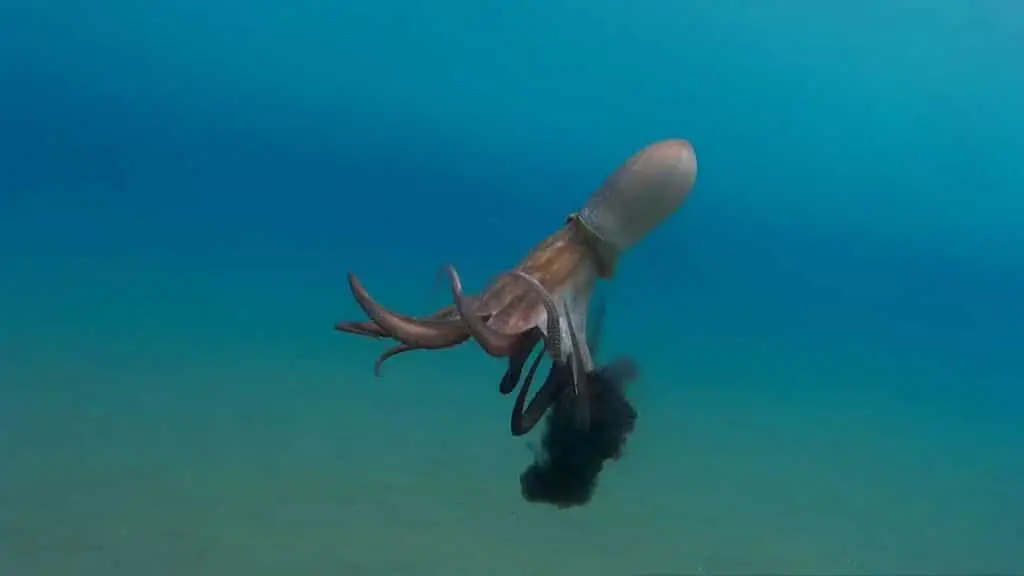
Conclusion
The phenomenon of octopus ink is a captivating testament to the incredible adaptability and ingenuity of these enigmatic creatures. Throughout this exploration, we have uncovered the multifaceted nature of this ink secretion, which serves as both a defensive weapon and a versatile tool for octopuses.
Octopus ink isn’t merely a desperate escape mechanism; it’s a strategic masterpiece honed by millions of years of evolution. It allows these cephalopods to vanish into the depths, eluding predators with a dazzling display of misdirection and stealth. The ink’s unique chemical composition further confuses and repels attackers, buying the octopus crucial moments to make a clean getaway.
Beyond defense, octopus ink serves as a survival tool in various scenarios. It helps them secure prey by disorienting potential victims and allows for resourceful foraging. It’s a versatile instrument in their arsenal, adapting to different situations and challenges they encounter in their underwater world.
It underscores the remarkable ways in which these intelligent cephalopods have evolved to thrive in their environment. Octopus ink is not just a substance; it’s a symbol of nature’s endless capacity for innovation and adaptation, a testament to the enduring mysteries that continue to draw us into the mesmerizing world of marine biology.

